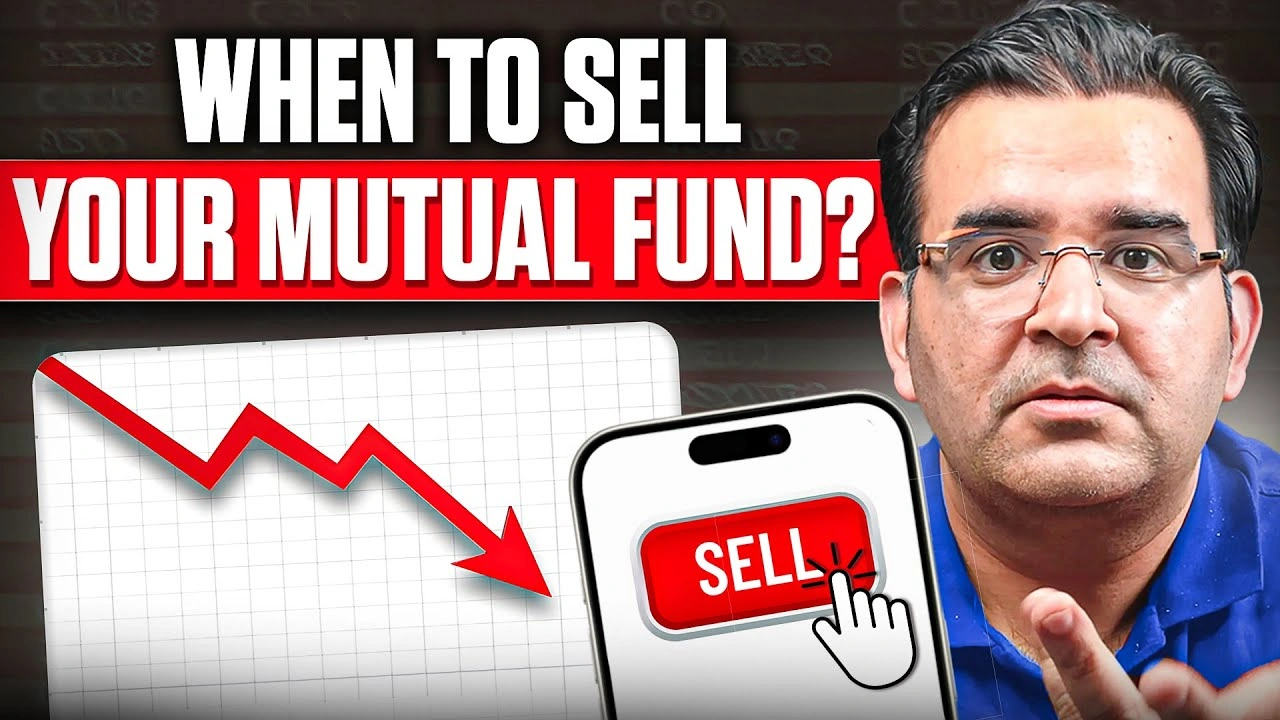In his video “When to Sell Your Mutual Funds | Mutual Funds Exit Strategy,” Sanjay Kathuria underscores that while investing is easy, knowing when to exit is the real game. A smart exit helps you secure profits, rebalance your portfolio, avoid emotional decisions, and manage tax efficiently.
1. Align with Your Financial Goals
The most important reason to sell mutual funds is when your original goal is achieved—whether it’s funding a child’s education, buying a house, or meeting a retirement milestone. Kathuria warns against staying invested merely out of greed; equity markets fluctuate, and exiting at the right time helps secure gains .
2. Fund Underperformance Over Time
A mutual fund might dip due to short-term market shifts—but consistent underperformance compared to peers or benchmarks over 2–3 years signals a problem. If research confirms this isn’t just a temporary blip, it’s prudent to sell and shift to better-performing alternatives .
Subscribe to : Sanjay_Kathuria
3. Rebalancing Your Portfolio
Over time, some funds might grow disproportionately, causing your asset allocation to drift. Regular rebalancing—typically annual—may require selling over-weighted funds and reallocating to maintain your risk profile and investment strategy .
4. Significant Personal Changes
Life events—such as retirement, marriage, health emergencies, or job loss—can alter your financial needs. Selling mutual funds at appropriate times ensures liquidity when goals or cash requirements change significantly .
5. Avoid Market Timing Traps
Data shows many investors fall into the trap of buying after gains and selling after drops—often missing the best market days, reducing long-term returns . Instead, Kathuria promotes planned exits over emotional reactions to market noise.
6. Tax Benefits and Harvesting
For equity funds, long-term capital gains over ₹1 lakh are taxed at 10%. You can minimize taxes by selling strategically—especially funds with small taxable gains—and rebalancing. In debt funds, indexation benefits often favor long-term holding.
6-Step “REMOVE” Exit Framework by Sanjay Kathuria
In social media posts, Kathuria outlines his REMOVE exit framework:
- Reassess your goals.
- Review asset allocation.
- Measure fund performance and benchmark comparisons.
- Optimize portfolio by evaluating better alternatives.
- Verify tax and exit load implications.
- Exit thoughtfully, and reinvest as needed.
This ensures your exit is driven by facts, not fear.
Final Takeaway
Sanjay Kathuria’s advice is clear: Exiting is as important as entering your mutual fund investments. A thoughtful, goal-based exit strategy helps you lock in gains, rebalance wisely, control taxes, and maintain investment discipline.
Use frameworks like REMOVE, review your portfolio regularly, and avoid emotional decisions.
For deeper insights into mutual fund strategies, goal-based investing, and portfolio optimisation, visit Investment Marg. For lifestyle-oriented finance tips and career insights, check InkSpireDaily.
FAQs:
Q1. Should I sell funds during a market crash?
No—market dips are normal. Only pull out if your goals, time horizon, or risk profile have changed meaningfully.
Q2. How significant must underperformance be?
Generally, two to three years below benchmark or peer group is a red flag.
Q3. How often should I rebalance my portfolio?
Annual or semi-annual rebalancing keeps your allocation in check and aligned with objectives.
Q4. How do I avoid bad market timing?
Stick to frameworks like REMOVE. Don’t react to short-term market noise.
Q5. How should I manage taxes when selling?
Track gains—sell to stay within ₹1 lakh LTCG exemption in equities or wait for debt fund indexation benefits.
Credits to: Sanjay_Kathuria

